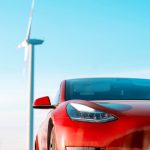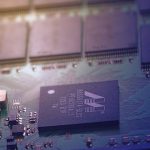A new chapter has begun for the field of agricultural robotics as Bonsai Robotics and farm-ng recently completed a merger, signaling an integrated push towards autonomous solutions in farming. Their collaboration aims to expand the capabilities of farm automation by leveraging advances in both hardware and software, notably through brands like the Amiga robot and Bonsai’s VisionSteer system. As the agricultural industry faces ongoing challenges with labor shortages, rising costs, and the demand for more precise farm management, this merger comes at a time when growers are actively seeking technological solutions for sustainable production.
Contemporary reports about the two companies’ collaboration previously detailed individual advancements, focusing on farm-ng’s modular robots and Bonsai’s software-directed autonomy. Past media coverage highlighted gradual integration, such as farm-ng offering software updates for the Amiga robot and Bonsai introducing vision systems for navigation without reliance on GPS. By joining forces, the companies now align their development teams, allowing collective progress toward integrated product offerings that seek to minimize equipment idle time and enhance data-driven farm management.
What Drives the Newly Formed Bonsai Robotics?
With Bonsai Robotics now absorbing farm-ng under a unified brand, leadership is emphasizing an “autonomy-first” approach. The company’s executives shared that existing farm-ng customers are piloting Bonsai’s software on Amiga robots. Central to this strategy is the development of VisionSteer, a vision guidance and fleet management toolkit that does not depend on GPS signals, a critical feature for under-canopy and orchard operations. Bonsai’s CTO, Ugur Oezdemir, described how their technology, by prioritizing AI and computer vision, enables “multi-purpose machine use across different seasons” and supports growers’ evolving needs.
How Will the Product Roadmap Evolve Post-Merger?
The merged company is maintaining hardware development in Watsonville and Davis, California, while their Bay Area office becomes a hub for software advancements. Plans are underway to continue evolving the Amiga and Amiga Max platforms, emphasizing modularity and affordability. The VisionSteer system is set to remain a retrofittable solution for any drive-by-wire farm machinery, aiming to enhance farm automation without requiring complete equipment replacement. Fleet management software enables a single operator to oversee multiple autonomous units, reflecting targeted efficiency improvements.
What Are Bonsai Robotics’ Objectives for Growers?
For growers, the integration of these technologies is designed to provide operational transparency, historical tracking of completed tasks, and precise intervention based on specific plant conditions. Bonsai Robotics expects that their combined platform will allow targeted, data-enabled responses to crop needs, reducing input costs and potentially minimizing environmental impacts. CEO Tyler Niday commented,
“On the farm-ng side, we were solving the mobility part with AI robotics and computer vision as first principles.”
He further explained the synergy, stating,
“We now have mobility and autonomy, mobility and navigation, hardware and software to make that available to the ecosystem to now build with autonomy-first kinds of principles.”
The decision to merge represents a broader strategy in agricultural robotics to consolidate strengths for more cohesive solutions. Earlier separate efforts from both companies typically addressed only parts of the broader challenge facing growers. By bringing together Bonsai’s software development with farm-ng’s hands-on robotics, the new entity becomes better positioned to serve an industry that increasingly values scalable, interoperable technologies. Growers navigating complex crop environments may benefit from a modular approach and expanded support systems, furthering efficiency without major overhauls to current operations. As automation progresses, tools like VisionSteer and Amiga Max hold potential not only for large-scale farming but also for small and midsize operations, offering broader accessibility and adaptability in the use of agricultural robotics.










